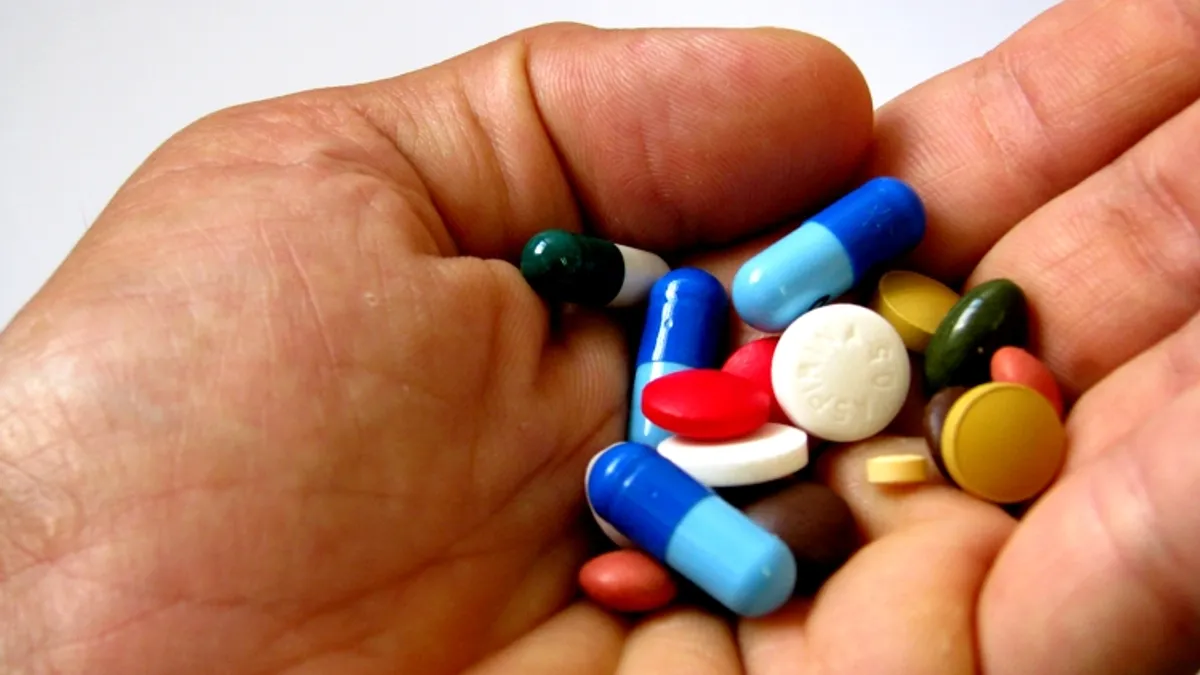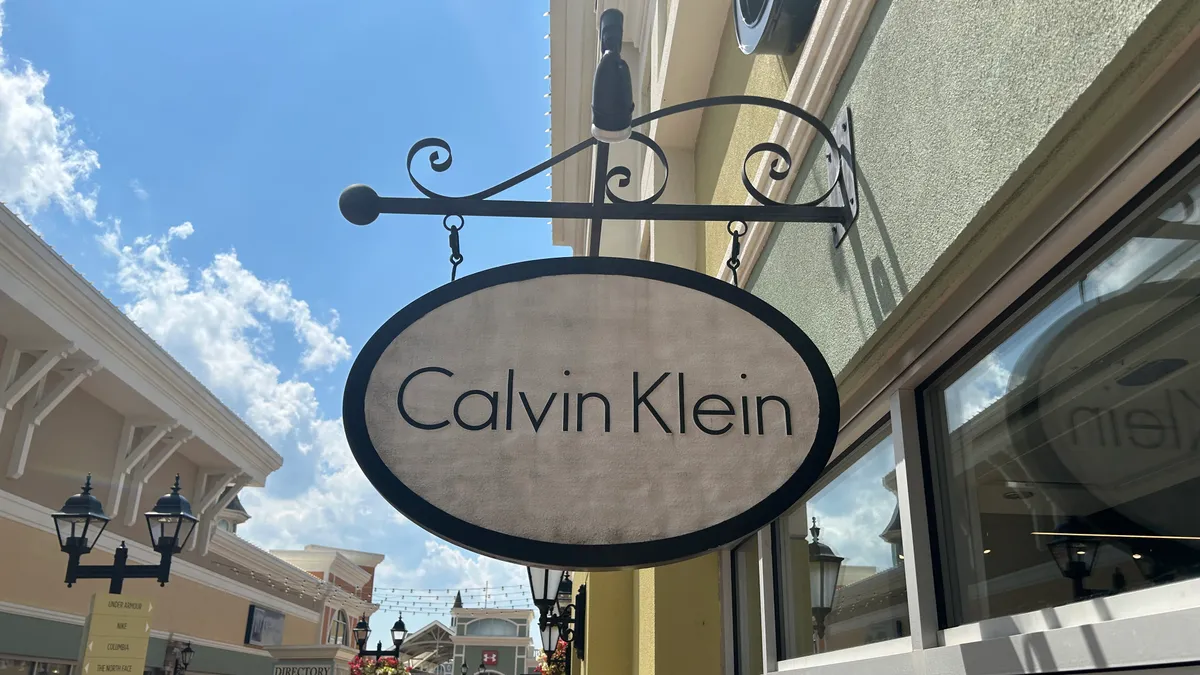It's frustrating to see an empty space on the shelf in the home improvement store where that last part to finish your project should be.
It's another level of disappointment when the pharmacy doesn't have the drug a consumer needs to combat the flu or high cholesterol.
In the world of pharmaceuticals, stockouts can have much higher consequences than in retail. Sure, retailers with stockouts suffer a loss of revenue, market share and customer satisfaction. However, pharmaceutical stockouts could lead to severe health complications at worse and another day of a stuffy nose at best.
"Ultimately it comes down to assurance of supply, and that's incredibly important if you're a pharmaceutical manufacturer," Matt Gunn, senior manager of product marketing Infor/GT Nexus, told Supply Chain Dive
While retail sales aren't as critical to consumers as their medications are, retailers can learn from the discipline inherent in the pharmaceutical supply chain.
Different supply chains, similar challenges
At a high level, the pharmaceutical and retail supply chains have much in common. Consumers purchase products from retailers, not the manufacturer or first tier distributors. Pharmaceuticals have a multi-step supply chain of manufacturers, wholesaler, and pharmacies in several channels including stand-alone retailers, grocery, and discount stores and healthcare facilities.
Inventory turnover can be similar as well. A retail pharmacy could turn over stock five to 12 times per year, according to AmerisourceBergen, a pharmaceutical distributor. Large retailers like Walmart and Costco turn over their stocks eight to 12 times a year as well, Retail TouchPoints reported.
"Everybody needs to be aware of working backward from the date that that particular product has to be on the shelf; otherwise it's chaos."

Kaushal Dave
Vice President of Cognitive Solutions, Aera Technology
Retail stores may have a complex chain from manufacturer to store shelf as well, with many products such as apparel, shoes, electronics and home goods assembled by contract manufacturers that are sold through distributors or directly to large retailers. E-commerce adds another layer of complexity to the retail and over-the-counter pharmaceutical process.
Both retail and pharmaceutical supply chains must guard against counterfeiting, hijacking and other criminal activities.
Tracking down to the powder
On the other hand, a pharmaceutical level of tracking and tracing granularity is not required for most retail products.
"If you're selling toys, you don't need to know where the screws are manufactured or where the steel for the screws is manufactured," said Kaushal Dave, vice president of cognitive solutions for Aera Technology, a supply chain software developer. "All you need to know is whether your shelves are going to be stocked on time."
Pharmaceutical manufacturers operate under strict regulatory oversight. As the Drug Supply Chain Security Act (DSCSA) of 2013 phases in, manufacturers will have to be able to track and trace every drug from origin to consumer.
To comply, manufacturers are building the capability to identify a batch of powder from an individual supplier and trace that all the way through the process to a pill that's packaged and shipped to a pharmacy.
"You can get that level of visibility very easily from the pharma side," Dave told Supply Chain Dive.
Data driven planning
Both pharmaceutical and retail supply chains plan for peak seasons — flu and holiday among them.
"There are certain cycles where you have to increase production and inventory, line up suppliers and give yourself the lead time necessary to get the right stock in the right place at the right time," Gunn said.
However, major retailers and suppliers often plan in silos, not sharing demand signals that could improve inventory flow through the respective supply chains. Lack of technology and financial incentives, as well as regulatory barriers, lead to a lack of coordination. Currently, pharma supply chain leaders have "limited control” over pharmacy supply chains, making it difficult for them to synchronize the end-to-end supply chain.
One tool pharma makers are tapping into is Available to Promise (ATP) planning. Aera is working with a European pharmaceutical client to install a system to calculate ATP dates for specific products. The system will start with sales order and then calculate available stock and delivery times based on existing inventory and then manufacturing lead times to supplement the supply.
"They will have the full visibility of that particular product both upstream and downstream," Dave said. "A pharmaceutical manufacturer will know how much raw materials they will need to buy for a particular product to be sold in a particular city, and that's a level of detail very rarely seen in the retail side."
Merck KGaA's healthcare division is deploying Aera's predictive analytics and artificial intelligence, the Wall Street Journal reported. The AI software assists the company's supply chain planners with repetitive tasks. The system synthesizes data from internal sources and algorithms factor in external data like weather forecasts, trends in patient health and natural disasters to make recommendations for adjusting supply and demand forecasts. The system makes daily recommendations on 100 fertility products involved in the pilot test.
Understand lead times, ‘otherwise it’s chaos’
Retailers may overlook the value of having a similar level of visibility because they rely on suppliers to meet deadlines rather than planning across the supply chain.
"It's important to understand the lead times in transit and stocking; everybody needs to be aware of working backward from the date that that particular product has to be on the shelf; otherwise it's chaos," Dave said.
Point of sale data can help drive insights on which products should have priority. On-shelf availability (OSA) data highlights products that have to be available or the consumer will buy a competitive product. OSA analysis at the individual SKU level can reveal which variants of a product are more valued by consumers.
For example, if a product is available in a blue and a red variant, is it essential to stock both? OSA analysis can show that if the blue version of the product is not on the shelf, customers will buy the red one. However, if the red version is not available, people don't buy the blue one, they go to a competing store.
"That's an OSA-sensitive SKU, which means you have to have that particular product on the shelf or you lose the sale," Dave said. "That's the type of detailed analysis that pharma really cares about, and retailers must learn to care about more."
"It isn't going to be life or death in the world of retail, but the more that you can create joy among your consumer base, the better."

Matt Gunn
Senior Manager of Product Marketing, Infor/GT Nexus
Inventory problems in a pharmaceutical company can add up to billions of dollars in losses in expired products and other quality problems. While most retail inventory problems aren't as costly, similar attention to detail could pay off.
"If retailers think of their inventory as expensive as pharmaceuticals, then they would think of it in the right way and do a lot better," Dave said.
Ultimately, pharmaceutical supply chains are more disciplined because they have to be. However, retailers can adopt the mindset to avoid stockouts as much as possible.
"Pharmaceutical companies are very good at focusing on patient outcomes, and for retailers, I think a big part of the challenge that they're facing is producing the best possible outcomes and experiences for their end consumer," Gunn said. "It isn't going to be life or death in the world of retail, but the more that you can create joy among your consumer base, the better — and the supply chain plays a big role in that."






















